The 7 Shows That Took HBO From Broadcast Copycat to Champion of Diverse Storytelling
-
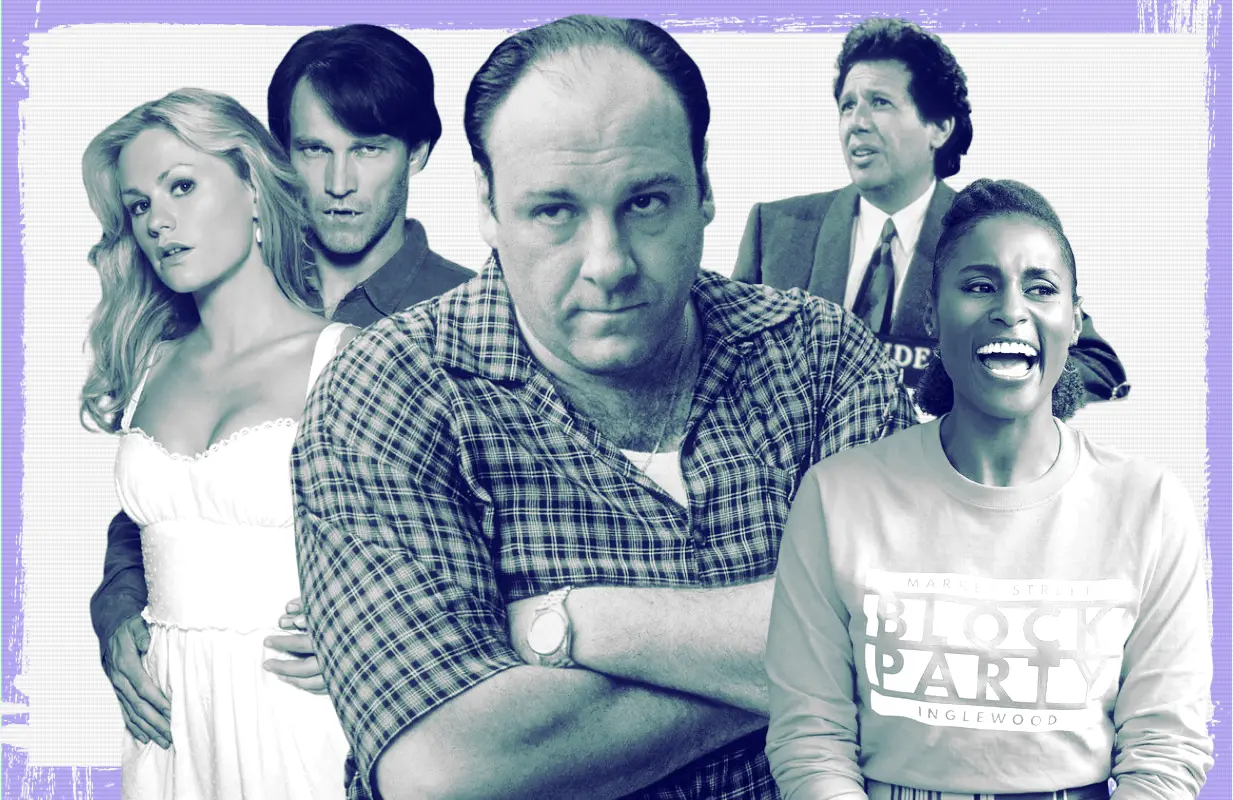 True Blood, The Sopranos, The Larry Sanders Show, and Insecure are among the shows that have defined HBO's first 50 years. (Photos: HBO/Primetimer graphic)
True Blood, The Sopranos, The Larry Sanders Show, and Insecure are among the shows that have defined HBO's first 50 years. (Photos: HBO/Primetimer graphic)This month marks the 50th anniversary of HBO, which launched on November 8, 1972. In our "HBO at 50" retrospective, Primetimer tracks the evolution of the cabler, from fledgling network to prestigious programmer and awards magnet.
HBO has gone through several iterations over the years, but one thing has remained constant: its thought-provoking programming. In its inaugural decade, the cable network brought the "Thrilla in Manila" to homes across the U.S. and pioneered the modern stand-up special. The 1980s saw the addition of a sibling channel — Cinemax, which continued HBO's tradition of airing theatrical releases — as well as millions of subscribers. By the mid-'90s, the network had established a reputation as the preeminent force in television — a position it has sometimes struggled to maintain, due to increasing competition.
But the path blazed by HBO's original series is as clear as it is impressive: The Larry Sanders Show and The Sopranos lent prestige to the medium, while fantasy-horror adaptation True Blood entertained the masses, carving a path for today's tentpole dramas. In the 2010s, Girls and Insecure brought viewers back down to Earth and broadened the scope of HBO's programming, ensuring that the premium cabler's offerings reflected its diverse audience base.
As HBO celebrates its 50th anniversary, we reflect on its unique eras of programming, as seen through these seven defining series.
1st & Ten Brings Broadcast Tropes to HBO (1983 to 1990)
A decade before "It's not TV. It's HBO" entered the lexicon, HBO took the opposite approach and attempted to recreate broadcast television on premium cable. In 1984, with Cheers and Family Ties dominating the airwaves, HBO took aim at the Big Three with 1st & Ten (1984 – 1991), a sitcom that took full advantage of cable's relaxed profanity and nudity standards. 1st & Ten starred Delta Burke as the new owner of a fictional football team, the California Bulls, and Reid Shelton (Annie's original Daddy Warbucks) as the team's aging coach. Though it ditches the laugh track, the HBO sitcom employed the same sarcastic humor and real-world storylines that typified comedies of the era, lending an air of familiarity to the series.
Burke left 1st & Ten midway through the third season for a lead role in CBS's Designing Women, but the series soldiered on until 1991, with O.J. Simpson, Shanna Reed, and Jason Beghe joining the cast over its six-season run.
1st & Ten may have been HBO's most obvious attempt at recreating the broadcast formula, but it was by no means the only one. In the 1980s, sketch comedy Not Necessarily the News (1983 – 1990) experimented with the Saturday Night Live and SCTV format, and Philip Marlowe, Private Eye (1983 – 1986), which aired across the pond on ITV, carried on the legacy of detective dramas like Columbo and Magnum, P.I..
The Larry Sanders Show Proves Comedy Is King (1990 to 1998)
If 1st & Ten was HBO's attempt to assimilate into the Big Three, The Larry Sanders Show (1992 – 1998) showed executives the power of true originality (it's no surprise that HBO's iconic slogan was introduced in 1996). The late-night parody afforded creator and star Garry Shandling an opportunity to reflect on his time as a stand-up and popular Tonight Show guest host while telling episodic stories about power structures, the cult of celebrity, and workplace dynamics, to hilarious results. Despite its relatively small audience, Larry Sanders was instrumental in establishing HBO as a place for quality programming, and its influence can be felt in many comedies that followed, including Curb Your Enthusiasm and Entourage.
With its 56 Emmy nominations (but only three wins, largely due to Frasier's dominance at the time), The Larry Sanders Show was the crown jewel in HBO's acclaimed comedy lineup of the 1990s, which also included Dream On (1990 – 1996) — from Friends co-creators Marta Kauffman and David Crane — Mr. Show With Bob and David (1995 – 1998), Arliss (1996 – 2002), and Sex and the City (1998 – 2004), the latter of which premiered just one week after Larry Sanders took its final bow in May 1998.
The Sopranos Ushers in a Golden Decade (1998 to 2008)
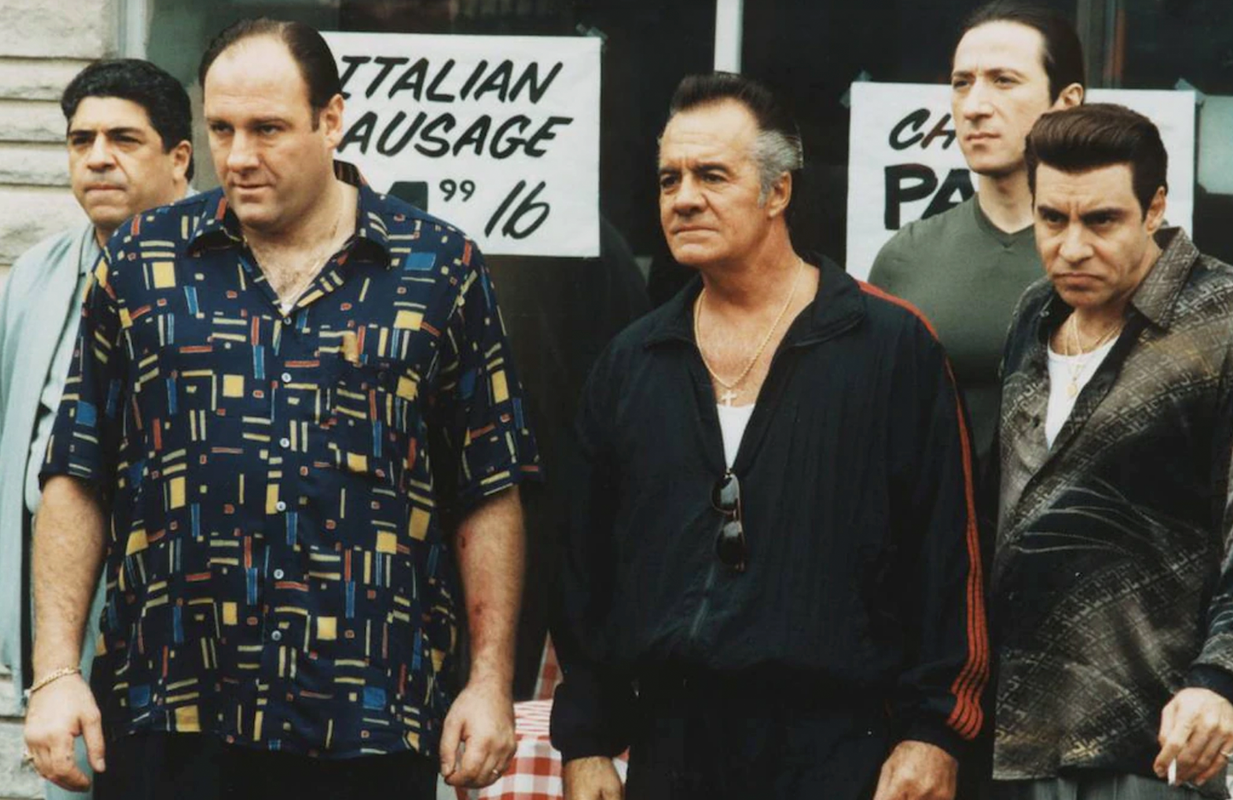
Any discussion of HBO's place in television history would be incomplete without a mention of The Sopranos (1999 – 2007), David Chase's seminal crime drama about the mob, mental illness, gender roles, and American suburban life. Widely regarded as one of the best, if not the best, television shows of all time, The Sopranos not only ushered in a golden age of television led by the antihero; it also helped the medium assert itself as an art form capable of telling stories with as much elegance and grandeur as films, literature, and theater.
Over the course of six seasons, The Sopranos solidified HBO's place as a destination for must-see television, leading to a massive boom in subscriptions. More money meant more programming and bigger budgets: Beyond The Sopranos, HBO released some of the most celebrated dramas in television history during this period, notably Oz (1997 – 2003), Six Feet Under (2001 – 2005), and The Wire (2002 - 2008) — another contender for the best show of all time.
Angels in America Cements HBO's Miniseries Dominance (2000 to 2010)
Consider this something of a sub-era. While HBO was amassing millions of Sopranos-obsessed new subscribers, it began investing in short, one-off miniseries, churning out a dozen from 2000 to 2010. The pinnacle of this effort came in 2003 with Angels in America, Mike Nichols' adaptation of Tony Kushner's Pulitzer Prize-winning play. A star-studded take on love, loss, and regret set against the backdrop of the AIDS epidemic, Angels in America injected new life into the television movie format and reinforced HBO's reputation as the home for adaptations of great historic and cultural importance.
At the 2004 Emmy Awards, Angels in America broke a decades-old record previously held by Roots for the most Emmys awarded to a miniseries in a single year (11 wins from 21 nominations), and it swept every major category, a feat only two other shows, Schitt's Creek and The Crown, have accomplished.
In the years that followed, HBO continued to dominate this category, winning the Emmy for Outstanding Miniseries for Elizabeth I (2005), John Adams (2008), and The Pacific (2010). It was Tom Hooper and Paul Giamatti's John Adams biopic series that bested Angels with 13 wins from 23 Emmy nominations, the current record.
HBO Sinks Its Teeth Into Genre Fiction With True Blood (2008 to 2012)
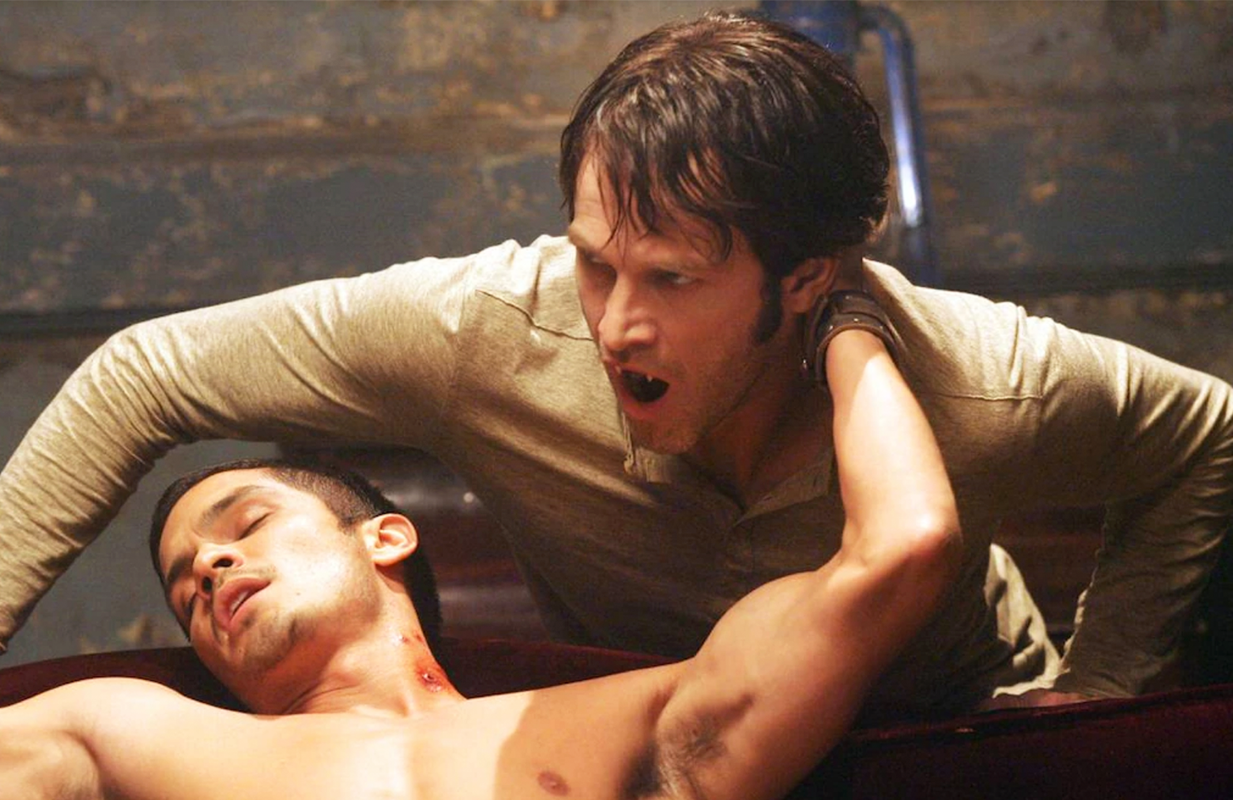
HBO's modern legacy is intimately intertwined with Game of Thrones (2011 – 2019), but it was True Blood (2008 – 2014) that paved the way for GOT by proving that genre fiction could succeed on premium cable. Premiering just a few weeks before the first Twilight film, True Blood starred Anna Paquin as Sookie Stackhouse, a telepathic waitress in rural Louisiana who falls in love with a hundred-year-old vampire, Bill Compton (Stephen Moyer). This supernatural premise served as a lens through which creator Alan Ball, who previously collaborated with HBO on Six Feet Under, explored contemporary issues like racial discrimination, homophobia, and religious violence, and while these important themes were often obscured by the drama's overall campiness, Ball never lost sight of them entirely.
When Game of Thrones premiered in 2011, HBO execs were able to use True Blood, already in its fourth season, as a blueprint for how to adapt ultra-popular fantasy novels into a series. George R.R. Martin may have written the source material, but True Blood's achievements reverberate throughout GOT, particularly in its depiction of explicit nudity, graphic violence, and large-scale battle scenes.
Girls Leads a Messy Return to Hyper-Realism (2012 to 2016)
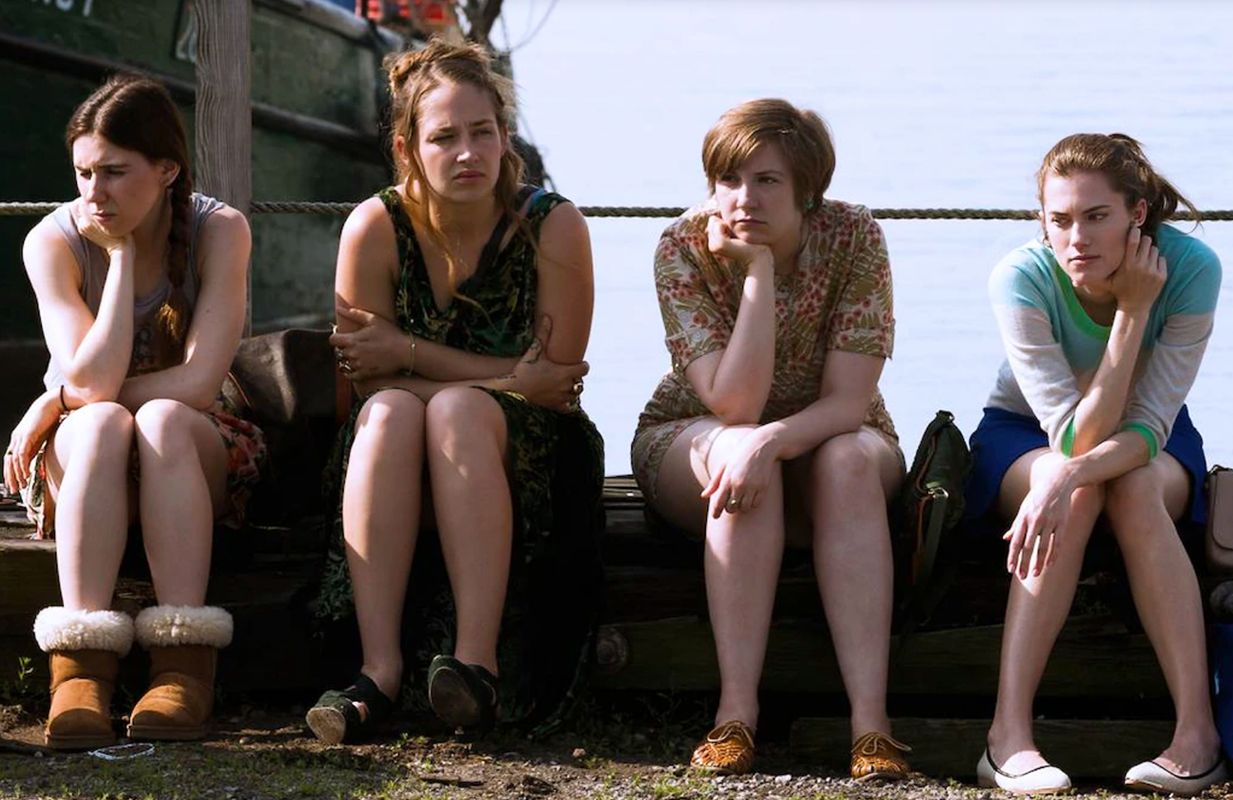
In the first half of the 2010s, Game of Thrones became HBO's flagship series, attracting record viewership for the premium cabler and its associated streaming services HBO Go and HBO Now. But for all its success, Game of Thrones was an outlier in HBO's programming slate at the time, which embraced hyper-realistic stories about the messiness of life. This trend started with Mike White's Enlightened (2011 – 2013), but reached its pinnacle with Girls (2012 – 2017), Lena Dunham's semi-autobiographical exploration of millennial ennui.
Unlike its spiritual predecessor Sex and the City, which more or less sought happy endings for its characters, Girls raised questions about whether these endings were deserved in the first place. Dunham's series was most comfortable playing in the sandbox of its characters' flaws, and it never lost sight of how their narcissism and self-involvement subsumed their romantic and platonic relationships.
With the benefit of hindsight, it's also possible to see Veep (2012 – 2019) and The Jinx (2015) as examples of HBO's commitment to authentically depicting the human experience. Though it was presented as satire, Armando Iannucci's Veep quickly proved to be an accurate predictor of political dysfunction (and earned quite a few Emmys along the way). Meanwhile, The Jinx highlighted the many contradictions at play in Robert Durst's life, and the compromises required of director Andrew Jarecki in order to investigate the murders Durst committed. In a historic moment for the true crime genre, The Jinx ended with Durst confessing to "kill[ing] them all" on a hot mic; Jarecki turned over the footage to the police, and Durst was arrested for the murder of Susan Berman the day before the finale aired. What's more real than that?
Insecure Paves the Way for More Diverse Stories (2016 to 2021)
The most common criticism of Girls is a valid one: With its four white leads and tendency to keep diverse characters on the margins, Dunham's series presents a fake version of New York City, one absent of any Black or brown people.
It took four years, but in 2016, HBO executives finally took this criticism to heart by committing to diverse stories from auteurs with a distinct point of view. Leading the charge was Insecure (2016 – 2021), Issa Rae's Peabody-winning comedy about the misadventures of an awkward Black girl (the same title as her popular web series). Much of Insecure's first season centered on Issa's relationship with her longtime boyfriend, Lawrence (Jay Ellis), but despite a committed fan campaign — #LawrenceHive, where you at? — the show's beating heart was always her friendship with Molly (Yvonne Orji). For five seasons, the push-pull between Issa and Molly served as a jumping-off point for Insecure to ask big questions about what it means to grow up and truly know ourselves, all while depicting the experience of young, Black people living in South Los Angeles in vibrant color.
Insecure's emphasis on female friendship is reflective of the push to move beyond HBO's male-oriented roots, which began in earnest after Casey Bloys took over as programming chief in May 2016. In the late 2010s, stories by and for women dominated the network's lineup, including Veep, Big Little Lies (2017 – 2019), gothic thriller Sharp Objects (2018), and Watchmen (2019). Game of Thrones followed suit: Though it didn't quite stick the landing, later seasons centered flawed but powerful female characters like Cersei Lannister (Lena Headey) and Daenerys Targaryen (Emilia Clarke). And with its incisive depiction of sexual assault and trauma, Michaela Coel's I May Destroy You, a co-production between BBC One and HBO, stands as one of the most boundary-pushing series of the 21st century to date.
House of the Dragon Steers HBO Into Its Next Era (2022 to ?)
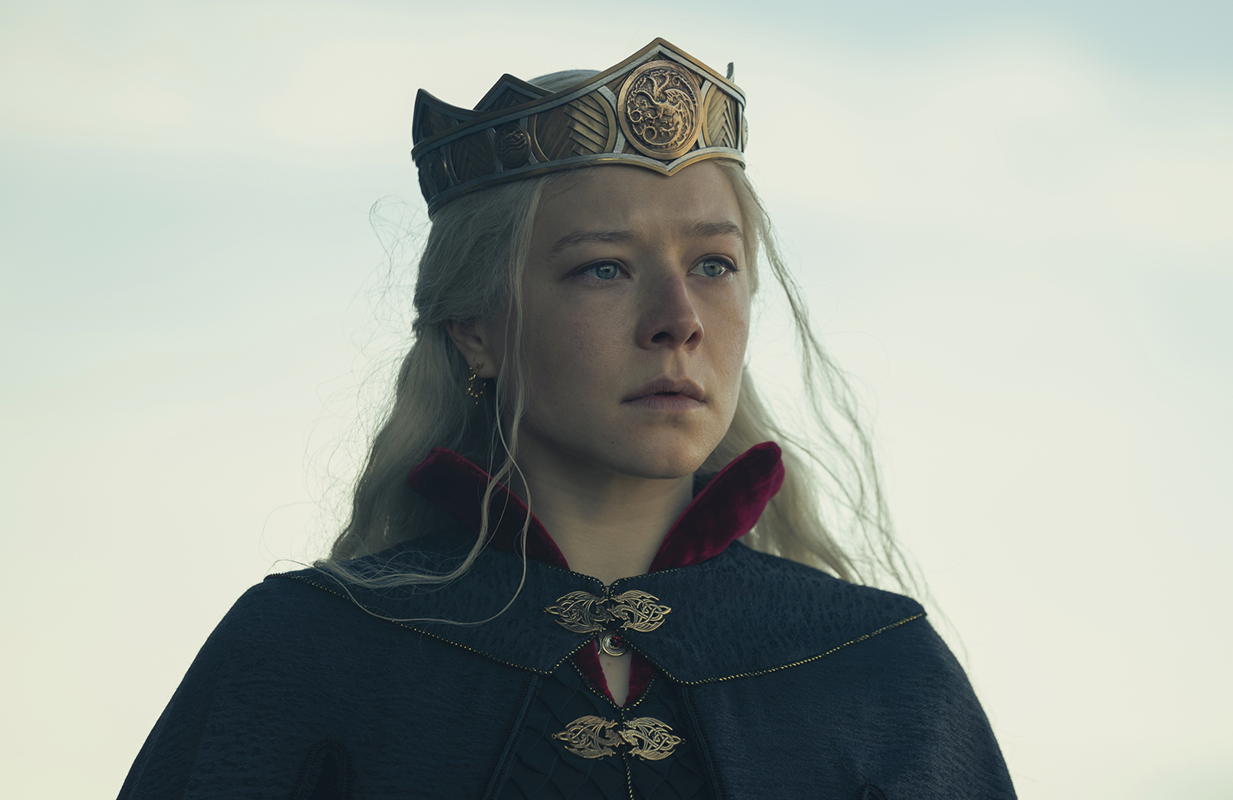
What's next for HBO? With parent company Warner Bros. Discovery in turmoil, it's difficult to know where the next five or 10 years will take the premium cable network, but House of the Dragon seems poised to lead the way. The premiere of the Game of Thrones spinoff was watched by more than 10 million viewers, making it HBO's largest debut ever. Still, Season 2 isn't expected to debut until 2024, so there's plenty of time for another show to swoop in and forever alter HBO's identity.
Could it be Succession, which seems to reinvent itself every season as its characters jockey for position around an all-powerful patriarch? Maybe it will be The Last of Us, the first HBO series to be based on a video game? Or perhaps it will be one of the dozen other projects HBO has in development, from The Weeknd's long-gestating drama The Idol to David Mandel's The White House Plumbers limited series. Whatever happens, you can count on HBO's next era to offer up something fresh and exciting — even if it involves a few more dragons.
Claire Spellberg Lustig is the Senior Editor at Primetimer and a scholar of The View. Follow her on Twitter at @c_spellberg.
TOPICS: HBO, 1st & 10, Angels in America, Girls, Insecure, The Larry Sanders Show, The Sopranos, True Blood
- Euphoria season 3 extends the cast list with three new actors: Natasha Lyonne, Trisha Paytas, Eli Roth, and more
- Peacemaker season 2 episode 5 release date and timing for every region, where to watch, and more
- HBO Max signs new deal to bring more anime films to its platform just days after removing American cartoons
- The Gilded Age Season 3 Finale recap: Is George Russell alive?